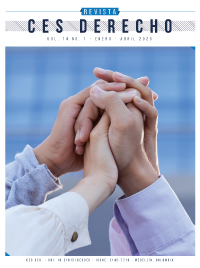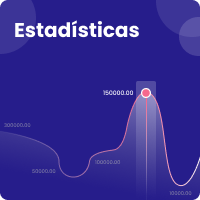La innovación y la regulación de los videojuegos: retos en materia tecnológica en Colombia
DOI:
https://doi.org/10.21615/cesder.6738Palabras clave:
microtransferencias, inteligencia artificial, videojuegos, nuevas tecnologías, revolución tecnológicaResumen
Actualmente, existe un desarrollo constante y vertiginoso en la industria de los videojuegos y de las nuevas tecnologías, situación que ha forzado a distintos Estados a presentar normas, y desarrollar al mismo paso. Sin embargo, gran parte de naciones no han tomado las acciones pertinentes al respecto, sin prever la crisis social y jurídica que podrá darse en la materia hacia un futuro.
Entendiendo así, como las nuevas tecnologías, en especial la inteligencia artificial, ha permitido que industrias como la de los videojuegos, presenten estrategias de marketing que no se encuentran reguladas en los estados, y, por consiguiente, ello, atenta contra la integridad de los consumidores debido a la falta de normatividad en la materia, no solo en Colombia, también en gran parte del mundo.
De manera tal, que tras entender ello, es menester entonces identificar aquellas consecuencias socio jurídicas derivada de la falta de regulación por parte del Estado. Y así, comprender lo idóneo para que los Estados, en materia jurídica respondan a esta posible crisis hacía un futuro de no ser reguladas, las nuevas tecnologías.
Descargas
Referencias bibliográficas
Álvarez Cabrera, S. F., & Reyes Hernández, K. Y. (2016). Protección jurídica de los videojuegos a través del derecho de autor. Medellín: Opinión Jurídica.
Batchelor, J. (31 de enero de 2018) Games Industry Generated 108.4bn In Revenues In 2017. GamesIndustry.biz. recuperado de https://www.gamesindustry.biz/articles/2018-01-31-games-industry-generated-usd108-4bn-in-revenues-in-2017
Caballero Trenado, L. (2019). Aspectos Jurídicos Clave del segundo dividendo digital. Logroño: Wolters Kluwer. Obtenido de https://www.researchgate.net/profile/Laura-Caballero-Trenado/publication/349915175_Key_Legal_Aspects_of_the_Second_Digital_Dividend_Aspectos_juridicos_clave_del_segundo_dividendo_digital/links/60496e88299bf1f5d83d8f1d/Key-Legal-Aspects-of-the-Second-Digit
Cámara de Diputados de Chile. (1997). PROYECTO DE LEY QUE INTRODUCE MODIFICACIONES A LA LEY N°19.496 DE PROTECCIÓN DE LOS DERECHOS DE LOS CONSUMIDORES Y SANCIONA LA COMISIÓN DE MICROABUSOS POR PARTE DE PROVEDORES. Santiago de Chile: Cámara de Diputados de Chile. Obtenido de https://www.camara.cl/verDoc.aspx?prmID=14173&prmTIPO=INICIATIVA
Congreso de la República de Colombia. (2012). Ley 1554. Bogotá D.C: Diario Oficial Congreso de la Repúbllica. Obtenido de http://www.secretariasenado.gov.co/senado/basedoc/ley_1554_2012.html
Clement, J. (2021). Video games industry market size in the U.S. 2010-2021. obtenido de https://www.statista.com/statistics/246892/value-of-the-video-game-market-in-the-us/
EFFECTS OF MICRO TRANSACTIONS ON VIDEO GAMES INDUSTRY. (2017). Kragujevac: Universidad de Kragujevac.
Ferrer Gil, A. (2019). La industria de los videojuegos y sus estrategias de marketing. Zaragoza: Universidad Zaragoza. Obtenido de https://zaguan.unizar.es/record/85713/files/TAZ-TFG-2019-1506.pdf
Florez, P. (2011). Suprema Corte de Estados Unidos deroga ley contra videojuegos violentos. California: Hipertextual.com. Obtenido de https://hipertextual.com/2011/06/suprema-corte-de-estados-unidos-deroga-ley-contra-videojuegos-violentos
Joyanes Aguilar, L. (2017). Ciberseguridad: la colaboración público-privada en la era de la cuarta revolución industrial (Industria 4.0 versus ciberseguridad 4.0). Salamanca: Universidad Pontificia de Salamanca. Obtenido de https://dialnet.unirioja.es/servlet/articulo?codigo=6115620
Lizardi, R. (2012). DLC: Perpetual Commodification of the Video Game. Penn State: College of Communications at Penn State University. Obtenido de https://journals.flvc.org/demcom/article/view/78739/76133
Mainer, B. (2020) FOTOGRAFÍA DEL VIDEOJUEGO: UNA NUEVA ECONOMÍA EN LA SOCIEDAD DIGITAL. obtenido de https://telos.fundaciontelefonica.com/fotografia-del-videojuego-una-nueva-economia-en-la-sociedad-digital/
Maya Lafaurie, J. C. (2019). PROTECCIÓN JURÍDICA DE LOS VIDEOJUEGOS ANÁLISIS NACIONAL Y DE DERECHO COMPARADO. Bogotá D.C: Universidad del Externado. Obtenido de https://bdigital.uexternado.edu.co/bitstream/handle/001/1812/GGAA-spa-2019-Proteccion_juridica_de_los_videojuegos_analisis_nacional_y_de_derecho_comparado?sequence=1&isAllowed=y
Ministerio de Tecnologías de la Información y Comunicaciones. (2020). PLAN 5G COLOMBIA. Bogotá D.C: Ministerio de Tecnologías de la Información y Comunicaciones. Obtenido de https://mintic.gov.co/micrositios/plan_5g/764/articles-162230_recurso_1.pdf
Monedero Morales, C. D., & Monedero Moya, J. J. (2015). Adentrándonos en el laberinto, ¿qué le ocurrirá si juega? Málaga: Lúdicamente. Obtenido de https://publicaciones.sociales.uba.ar/index.php/ludicamente/article/view/4267/3520
PARLAMENTO EUROPEO. (2016). DIRECTIVA (UE) 1148. Unión Europea: Diario Oficial de la Unión Europea.
Pérez Alonso-Geta, P. M. (2008). PROTECCIÓN DE LA INFANCIA Y NUEVAS TECNOLOGIAS DE LA COMUNICACIÓN: EL CÓDIGO PEGI DE REGULACIÓN DE LOS VIDEOJUEGOS Y JUEGOS ON-LINE. Salamanca, España: Revista TESI. Obtenido de https://www.redalyc.org/pdf/2010/201017343003.pdf
Piracón Fajardo, J. A. (2017). Prohibido jugar: analisis de las leyes de videojuegos en Chile y Colombia. Buenos Aires: Revista Lúdicamente. Obtenido de https://publicaciones.sociales.uba.ar/index.php/ludicamente/article/view/4326
Sanz Larruga, F. J. (1997). EL DERECHO ANTE LAS NUEVAS TECNOLOGÍAS DE LA INFORMACIÓN. La Coruña: Dialnet. Obtenido de https://ruc.udc.es/dspace/bitstream/handle/2183/1934/AD-1-26.pdf
Supreme Court of Justice of the United States of America. (2011). BROWN, GOVERNOR OF CALIFORNIA, ET AL. v ENTERTAINMENT MERCHANTS ASSOCIATION ET AL. Washington D.C: Supreme Court of Justice Gazette. Obtenido de https://www.supremecourt.gov/opinions/10pdf/08-1448.pdf
Taddy, M. (2018). The technological elements of artificial intelligence. Chicago: NBER. Obtenido de https://www.nber.org/system/files/working_papers/w24301/w24301.pdf
Vallejo Giraldo, J. E. (2019). Derecho y Cuarta Revolución Industrial. Medellín: Universidad Eafit. Obtenido de https://repository.eafit.edu.co/bitstream/handle/10784/16974/document%20-%202020-06-18T220843.609.pdf?sequence=2&isAllowed=y
Descargas
Publicado
Cómo citar
Número
Sección
Licencia
Derechos de autor 2023 CES Derecho

Esta obra está bajo una licencia internacional Creative Commons Atribución-NoComercial-CompartirIgual 4.0.
| Estadísticas de artículo | |
|---|---|
| Vistas de resúmenes | |
| Vistas de PDF | |
| Descargas de PDF | |
| Vistas de HTML | |
| Otras vistas | |




